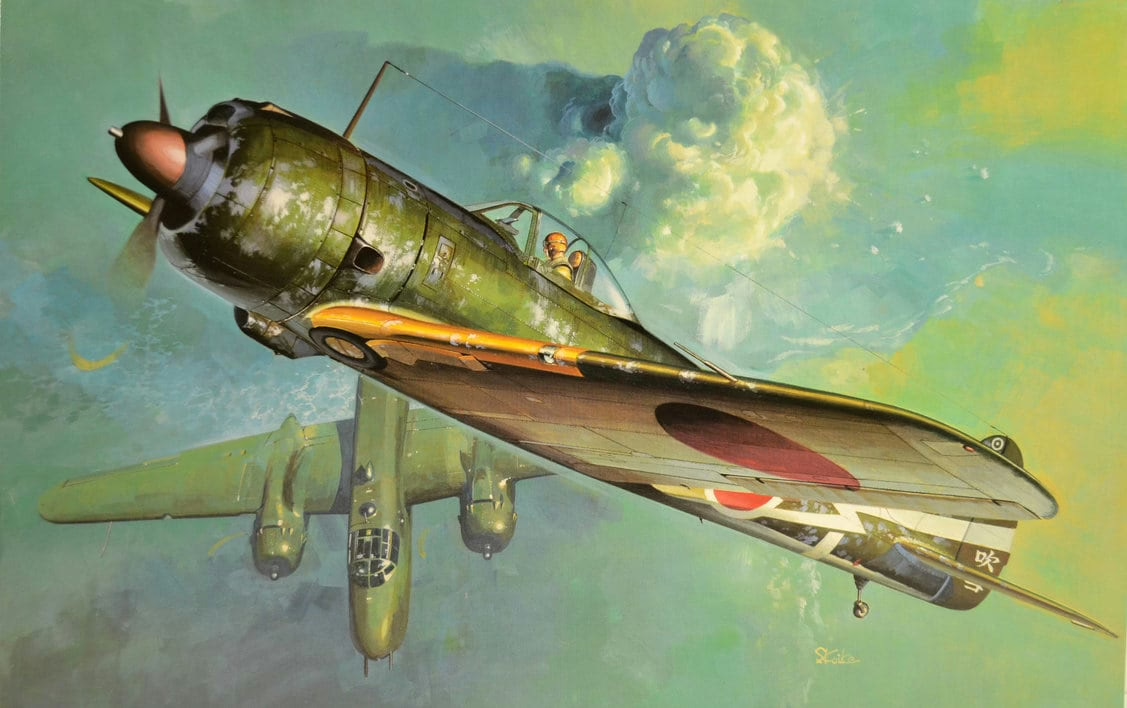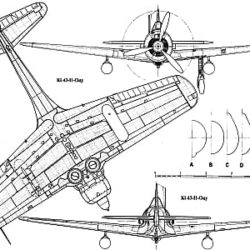Nakajima Ki-43 “Hayabusa” History
The nimble Nakajima Ki-43 “Hayabusa” was the most numerous Japanese army fighter despite an inherently limited design potential. Rendered obsolete by modern Allied fighters, it remained in frontline service to the bitter end of World War Two.
The Ki-43 was designed by Dr Hideo Itokawa in 1938 as a potential replacement for the Japanese Army Air Force’s (JAAF) Ki-27 fighter, and the first of three prototypes was flown early in January 1939. Despite excellent speed and range qualities, the Nakajima Ki-43 “Hayabusa” was somewhat heavy on the controls, and the first of the ten pre-production aircraft, which appeared in November 1939, was a lighter aeroplane with increased wing area and ‘combat flaps’ that vastly improved its handling characteristics. It was quickly ordered in quantity and was to remain in production throughout the Pacific war, by which time five thousand seven hundred and fifty one had been delivered. The initial version, the Ki-43-Ia Model 1A, entered production in March 1941. Fire-power was improved in later versions, the major early version being the Ki-43-Ic Model 1C with two fuselage-mounted 12.7 mm guns. At the time of Pearl Harbor about forty Nakajima Ki-43 “Hayabusa” fighters were in JAAF service and, although extremely popular as flying machines, combat experience soon revealed a need for greater armour protection and increased engine power. These appeared in the Ki-43-IIa Model 2A, built by Tachikawa factories in 1942-43, which was powered by the 1,105 hp Sakae Ha-115 engine and could carry two 551 lb (250 kg) underwing bombs. This was succeeded in November 1943 by the Ki-43-IIb Model 2B, a clipped-wing variant of the Model 2A with greater with great manoeuvrability. Joint production by Nakajima and Tachikawa from December 1944 yielded the Ki-43-IIIa Model 3A (1,250 hp Kasei Ha-112 engine), the last production version.
The Nakajima Ki-43 “Hayabusa” debuted during the successful Japanese conquest of Singapore and Burma and swept aside all the Hawker Hurricanes and Brewster F2A Buffaloes it encountered. They had tougher going against Curtiss P-40s of the Flying Tigers, which refused to engage them in a suicidal contest of slow turns.
The Hayabusa was encountered in particularly strong numbers during the battle for Leyte Island, and in the defence of the Kurile Islands north of Japan, but it served widely throughout all the mainland and island battle areas of south-east Asia, in suicide attacks during 1944-45, and in the final defence of the Japanese homeland. The Nakajima Ki-43 “Hayabusa” (Pacific code name ‘Oscar’) was and excellent and versatile fighter, its only serious drawback being its lack of adequate armament. Production peaked at 5,919 machines.










